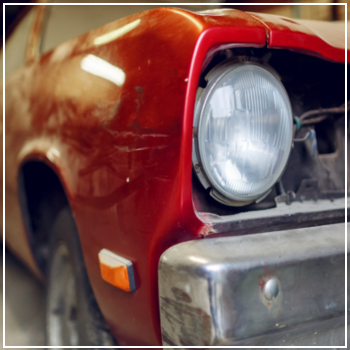Why Are Older-Model Cars More Prone to Rust?
 Have you ever tried restoring a vintage, classic, or antique car? If so, you’ve probably noticed unsightly rust patches that seem to appear out of nowhere. You might also wonder why cars from the 1990s and beyond don’t show as much wear and tear.
Have you ever tried restoring a vintage, classic, or antique car? If so, you’ve probably noticed unsightly rust patches that seem to appear out of nowhere. You might also wonder why cars from the 1990s and beyond don’t show as much wear and tear.
The reason lies in how car manufacturers have evolved over the years. Just as technology has advanced with more computer systems in modern vehicles, so too has the materials used in their construction—especially when it comes to preventing rust and corrosion.
Today’s cars are more likely to be built with galvanized steel and aluminum components, both of which offer better protection against rust than older models. Here's a closer look at these materials and what they mean for your vehicle.
Galvanized Steel: A Game-Changer in Corrosion Resistance
Since the 1980s, many car manufacturers have started using galvanized steel—a material made by bonding zinc to steel. This process creates a protective layer that significantly slows down the rusting process. In the U.S., most new vehicles come with galvanized steel as standard for body panels and structural parts.
The zinc coating not only acts as a barrier but also forms an electrochemical bond with the steel beneath. This means it doesn’t just sit on top like paint—it actually interacts with the metal to prevent oxidation. Under ideal conditions, galvanized steel can last up to 70 years before showing signs of corrosion.
However, this doesn’t mean it’s completely immune. Areas where the steel has been welded or bent are more vulnerable. To address this, some manufacturers apply additional sealants in those areas to boost protection. Still, in regions with heavy rain or road salt, even galvanized steel can begin to rust if not properly maintained.
Aluminum: Lighter, But Not Always Rust-Proof
Aluminum is another popular material used in modern vehicles due to its lightweight nature, which can improve fuel efficiency. It also has natural corrosion resistance, making it a good alternative to steel in certain applications.
But here’s the catch: while aluminum is less prone to rust, it isn’t entirely immune. In fact, some studies have shown that aluminum can still corrode under certain conditions. For example, in 2015, Consumer Reports found that aluminum parts could experience premature corrosion, leading to legal issues for some automakers like Ford, who had previously claimed their aluminum F-150 and Explorer models were “corrosion-proof.â€
This highlights the importance of understanding the limitations of materials—even those marketed as highly resistant to damage.
Other Innovations in Preventing Rust
Alongside material changes, car designers have also focused on reducing the chances of corrosion through design improvements. For instance, the undercarriage—often the first area to show rust—is now frequently coated with protective layers to shield it from moisture and road debris.
Modern vehicles also use fewer seams and have smoother surfaces to reduce places where dirt and water can collect. In some cases, plastic is used instead of metal in high-risk areas. Even exterior trim is often made from galvanized steel rather than chrome or stainless steel, which can be more prone to flaking and corrosion over time.
If you're noticing signs of rust or flaking paint on your car, don’t ignore it. Early intervention can save you from costly repairs down the line. At DaSilva’s Auto Body, we specialize in rust removal services and can help restore your vehicle to its best condition.
Contact our Naugatuck location today to learn more about our services or schedule an appointment. Whether you’re dealing with an old classic or a newer model, we’re here to help protect your investment and keep your car looking great for years to come.
Custom Aluminum Wheelchair,Electric Wheelchair,Hoveround Electric Wheelchair,Heavy Duty Electric Wheelchair
Ningbo Baichen Medical Devices CO.,ltd , https://www.bcscooter.com